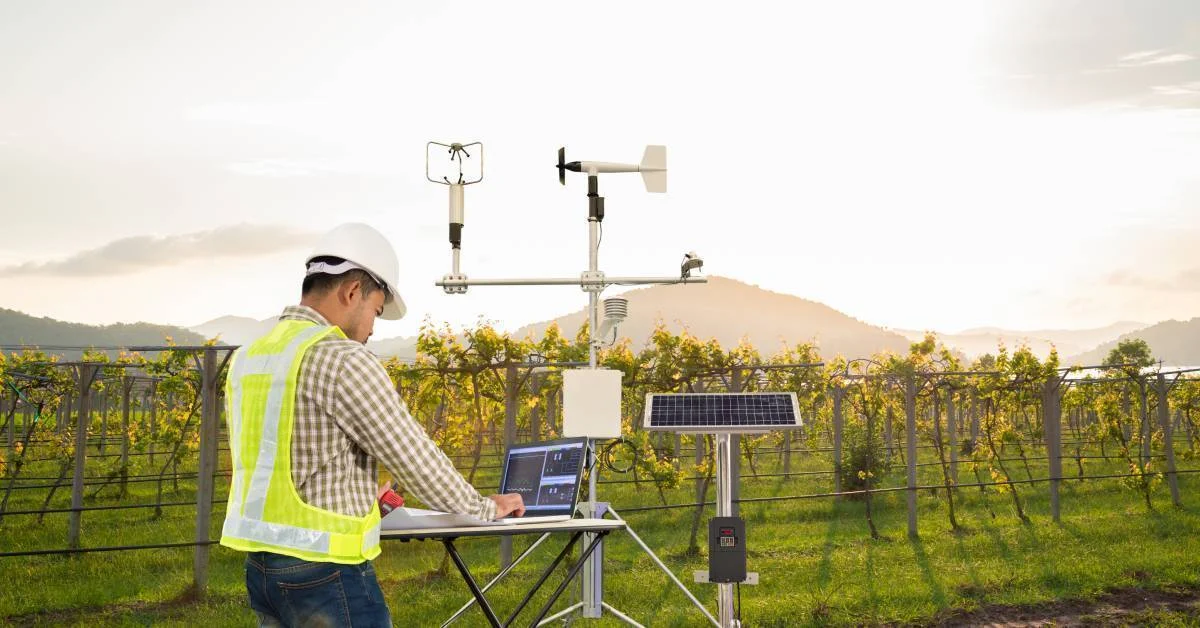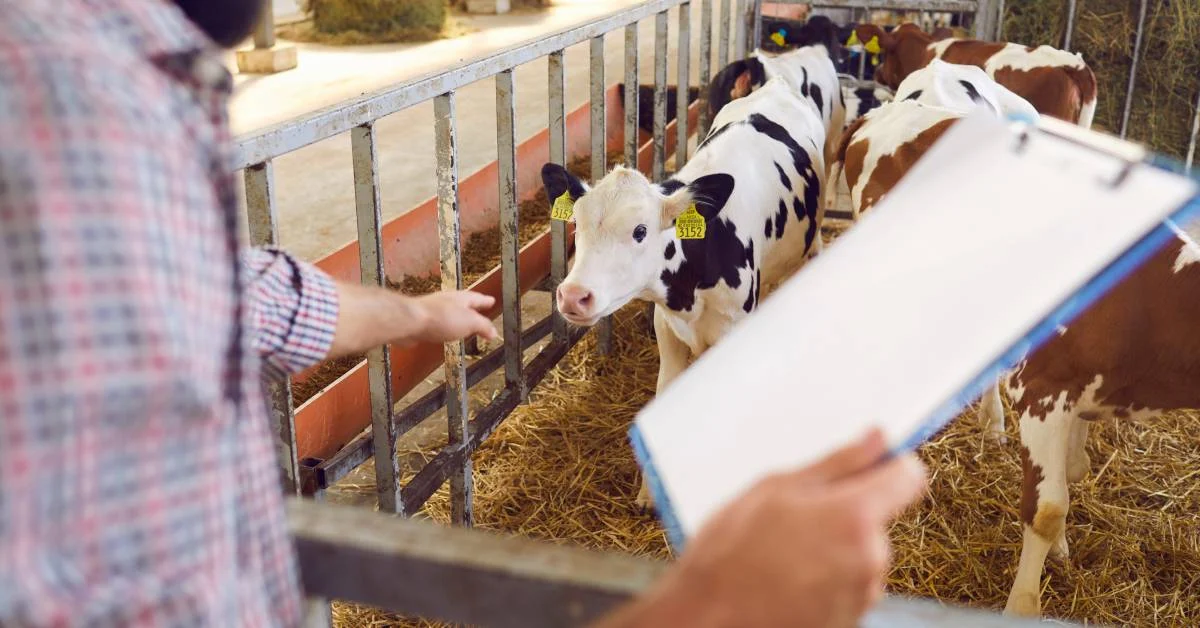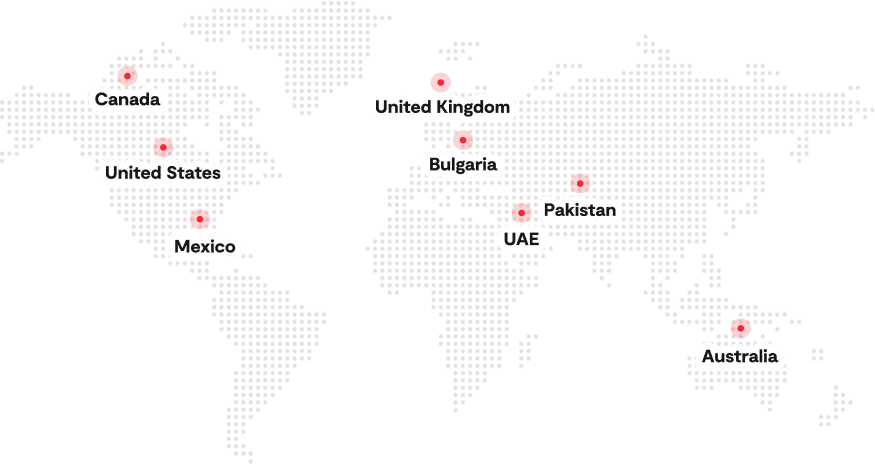Ask any farmer today, and they’ll tell you, farming isn’t getting any easier. Inputs are expensive, the weather’s all over the place, and there’s pressure to grow more using fewer resources. Time feels short, and mistakes can be costly. That’s why the idea of farm efficiency is becoming so important for farmers.
But here’s the thing: running an efficient farm takes more than hard work. It takes knowing what’s happening on your land. How much seed did you use last season? What did you spray and when? Which field gave you the best return? If you don’t have those answers ready, you’re not alone.
Many farmers still rely on their memory, notebooks, or spreadsheets. But with everything happening in multiple fields, machines, and among workers, it’s easy to miss things. That’s where farm record-keeping software helps. It’s about keeping your records in one place, so you can make smarter decisions and avoid costly mistakes, just like couriers rely on route optimization tools to prevent delivery errors and delays.
Farmers adopt farm record-keeping software to manage operations better and protect their bottom line. In this blog, we’ll explore real ways the software can help improve farm efficiency. If you’re already juggling too much, this might be one less thing to worry about.
What is Farm Efficiency?
At its core, farm efficiency is how well a farm converts inputs into outputs. This is often quantified using the Total Factor Productivity metric, which divides total output (such as crops or livestock products) by the total inputs (including land, labor, capital, and materials) used in production. An increase in TFP indicates that a farm is producing more output without a proportional increase in inputs, signifying improved farm efficiency.
Several key ratios help assess different aspects of farm efficiency:
Operating Expense Ratio
This ratio divides total operating expenses (excluding depreciation and interest) by gross farm revenues. It measures how efficiently a farm uses its operating costs to generate revenue. For instance, if a farm has an operating expense ratio of 66%, it means that $66 is spent on operating expenses for every $100 of revenue generated.
Asset Turnover Ratio
This ratio assesses how effectively a farm uses its assets to generate revenue. It is calculated by dividing gross revenues by the average total assets. A higher ratio indicates a more efficient use of assets.
Net Farm Income Ratio
This ratio measures the portion of gross revenue that remains as net income after all expenses. It provides insight into the overall crop profitability and farm efficiency.
Improving these farm efficiency metrics often involves adopting better management practices, using technology for precise input application, and making informed decisions based on accurate data. By focusing on these areas, farmers can enhance efficiency and productivity in agriculture.
| Metric | What It Measures | How It’s Calculated | Why It Matters |
| Operating Expense Ratio | Portion of revenue spent on operating costs | Operating Expenses ÷ Gross Revenue | Shows how much income is eaten up by day-to-day costs |
| Asset Turnover Ratio | Efficiency of asset use in generating revenue | Gross Revenue ÷ Average Total Assets | Higher values mean you’re getting more return from equipment or land |
| Net Farm Income Ratio | Profitability after all expenses | Net Farm Income ÷ Gross Revenue | Reveals how much income remains as profit |
| Total Factor Productivity (TFP) | Overall production efficiency using all inputs | Output Index ÷ Input Index | Indicates whether you’re producing more with fewer resources |
| Labor Efficiency | Output per labor hour or per worker | Output ÷ Labor Hours | Helps assess labor planning and performance |
| Input Efficiency (e.g., Nitrogen Use Efficiency) | Yield gained per unit of input | Yield ÷ Input Used (e.g., kg N/ha) | Highlights over- or under-use of inputs |
6 Proven Farming Tips to Increase Efficiency and Productivity in Agriculture
How to improve farm efficiency? Improving farm efficiency requires a holistic approach. Below, we present practical strategies that can help you improve the efficiency of your farm. By applying these strategies, you can optimize each aspect of your operation by reducing waste, saving time and inputs, and maximizing output.
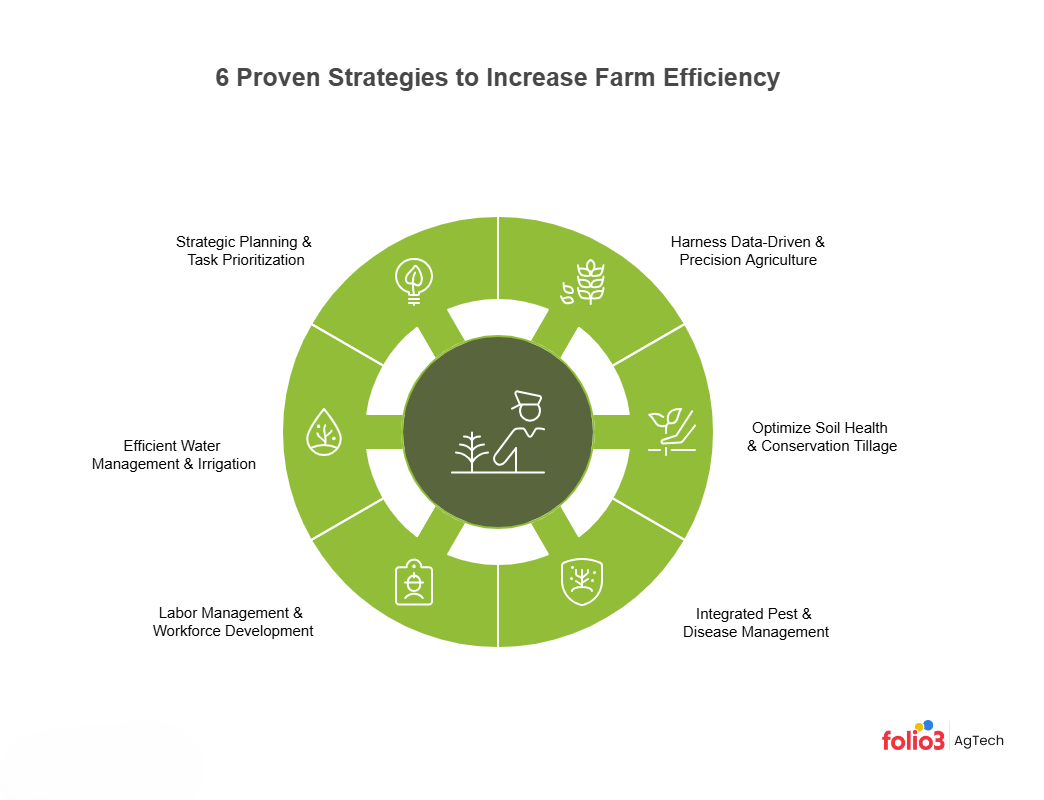
1. Strategic Planning & Task Prioritization
Farm efficiency begins with smart planning. Define what you want to achieve this season, then break it into monthly, weekly, and daily tasks. Prioritize activities by importance and timing, like planting, irrigation, and harvesting, which should be done when conditions are optimal. Many farmers rely on weekly to-do lists and field calendars to stay organized.
However, thinking only in single-season cycles can limit your efficiency. Multi-season planning allows you to forecast input needs, crop rotations, and labor requirements well in advance. It will help you secure better pricing on seeds, fertilizers, or equipment leases, and avoid last-minute shortages. Using digital crop management tools takes planning further, allowing you to assign tasks, monitor budgets, and adapt when weather or markets shift.
Also, mobile tools are game changers, and you can explore the best apps for farmers to manage tasks right from your phone. Effective planning and a clear budget cut idle time, prevent resource conflicts, and reduce waste. Even planning field passes well is a farm efficiency measure in itself, lowering fuel use and labor hours.
Actionable Takeaways:
- Set specific efficiency goals (e.g., reduce fertilizer waste by 10%) and map out tasks to achieve them in your farm plan.
- Use a calendar or software to schedule routine tasks (field prep, planting, spraying, etc.) and batch similar tasks together to save time and fuel.
- Create a daily or weekly to-do list for your farm crew, and track progress against it – this keeps everyone focused on high-priority work.
2. Harness Data-Driven Decision-Making & Precision Agriculture
Data is a key driver of yield improvement. See how effective farm data management leads to successful crop yields in real-world scenarios. Tools like soil sensors, GPS-guided tractors, drones, and satellite imagery let you apply the right inputs at the right place and time. Research shows these methods can raise yields by 15–20% while reducing input costs by 25–30% through reduced waste.
Meanwhile, tracking metrics such as yield per acre or yield per unit of fertilizer, your agricultural productivity formula highlights inefficiencies. With business intelligence for agriculture dashboards, you can see real-time performance data, making data-driven farming decisions easier. Whether it’s adjusting seeding rates or fine-tuning fertilizer timing, calculated precision leads to measurable gains in calculating production efficiency.
Actionable Takeaways:
- Adopt one new precision ag tool at a time (e.g., GPS guidance, yield monitor, or soil sensor) and use its data to refine your input use.
- Start tracking a simple efficiency KPI, such as input cost per bushel, in a spreadsheet or business intelligence for agriculture dashboard – review it after each season to identify improvement areas.
- Use climate data and forecasts to guide decisions (for example, delay fertilizer application if heavy rain is expected, to avoid wasteful runoff).
3. Optimize Soil Health & Conservation Tillage
If you want real gains in agricultural efficiency, start from the ground up with your soil health. Practices like no-till or strip-till slash heavy plowing passes, cutting diesel use and labor time compared to conventional tillage. That’s fuel, hours, and money back in your pocket. Healthier soil holds more water, needs less fertilizer, and supports better yields over time. Some farmers report net income boosts of $25,000 annually and 99% less erosion after adopting no-till and cover crops.
Meanwhile, the integration of soli testing data into digital tools like harvest management software can help you track soil conditions alongside crop maturity, so you harvest at peak quality. Combine conservation tillage with cover crops, crop rotation, and organic matter additions, and you’ll build soil that works harder for your crops and your bottom line.
Actionable Takeaways:
- Reduce tillage gradually by switching a couple of fields to strip-till or no-till and compare input costs and yields with your tilled fields. Monitor fuel and labor hours saved.
- Plant a diverse cover crop in the off-season (e.g., clover, rye) to improve soil structure and fertility naturally. It can reduce how much fertilizer you need to apply next season.
- Test your soil regularly and apply only the nutrients needed. Over-fertilizing is inefficient and can harm soil biota; efficient farming means feeding crops precisely based on soil test data.
4. Efficient Water Management & Irrigation
Water scarcity is one of the biggest challenges you’ll face in efficient farming, and mastering water management can make or break your agricultural productivity. Switching to drip irrigation or micro-sprinklers can cut water use by 20–50% compared to conventional systems while maintaining yields.
Even small fixes like repairing leaks or calibrating sprinklers can save thousands of gallons. You can also capture rainwater in ponds or tanks to reduce reliance on pumping. Tools like greenhouse management software help monitor microclimates, track soil moisture, and control irrigation for maximum precision. Done right, every drop works hard, lowering costs, improving root health, and reducing disease pressure.
Actionable Takeaways:
- Inspect your irrigation system for hidden inefficiencies, clear clogged drip lines, repair leaks, and recalibrate sprinklers to eliminate overspray. Minor maintenance can save thousands of gallons.
- Implement a basic soil moisture monitoring routine, even using a simple probe or tensiometer, and irrigate only when readings show it’s needed.
- If you have the ability, irrigate during off-peak cooler hours (e.g., early morning). It reduces evaporation losses and ensures water penetrates to roots, improving effectiveness.
5. Integrated Pest & Disease Management (IPM)
When pests or diseases get ahead of you, they can drain yields and profits fast. That’s why integrated pest management (IPM) is one of the smartest farm efficiency measures you can adopt. IPM blends biological, cultural, and chemical controls so you act only when necessary, cutting waste and protecting your crops. Studies show that well-run IPM programs can reduce pesticide use by 50% or more without hurting yields.
Therefore, early detection is critical: use crop scouting tools to regularly check for issues and pest management software for data-driven measures to eliminate pests before they spread. For farmers looking for natural, sustainable approaches, our guide on organic pest control methods offers practical strategies that work hand-in-hand with IPM principles. The goal isn’t zero spraying, it’s smarter spraying, backed by data, so you avoid unnecessary passes and keep your farm’s ecosystem healthier over time.
Actionable Takeaways:
- Develop a weekly scouting routine: walk fields or use crop scouting tools to log pest counts and plant health. Treat only when pest levels exceed your economic threshold.
- Rotate modes of action for chemicals and prioritize targeted products (e.g., pheromone disruptors, biological pesticides) to avoid pest resistance.
- Leverage disease detection software or alerts for your key crops, so you can apply fungicides or other measures at the earliest sign of disease rather than after it has exploded.
6. Smart Labor Management & Workforce Development
Labor is one of your most considerable costs, and if you’re like the 56% of farmers who report shortages, you can’t afford wasted hours. Boosting labor efficiency starts with better task scheduling and clear workflows. Group jobs by location or equipment needs, so workers aren’t losing time moving back and forth or switching tools.
Cross-train your crew so they can step into multiple roles when needed. Use time-tracking tools or an agricultural ERP system to plan shifts, monitor productivity, and avoid both idle time and last-minute scrambles. When you treat your team as a skilled partner, giving them responsibility, you create a workforce that’s motivated and adaptable to run your farm smoothly.
Actionable Takeaways:
- Create a farm map and task plan that divides work by zones and assigns crews to specific areas for the day to cut down travel time and confusion.
- Use an agricultural ERP system or even a shared spreadsheet to schedule labor for all upcoming activities (planting, maintenance, harvest). Planning labor needs helps prevent last-minute scrambles or idle workers.
- Hold short weekly meetings with your team to review priorities, acknowledge achievements, and get feedback. Engaged and informed employees will work more efficiently and care about improving the farm.
Role of Farm Record-Keeping Software In Improving Farm Efficiency
Farm record-keeping software is quickly becoming one of the most valuable tools for farmers who want to work smarter, not harder. When you’re managing everything from crop cycles to equipment maintenance, it’s easy for things to slip through the cracks.
Traditional methods, such as notebooks or spreadsheets, are time-consuming and prone to errors. This is where farm record-keeping software becomes essential. It brings everything together in one place, helping farmers stay organized and make better decisions with the data they collect. By automating data entry and giving you instant access to detailed farm records, farm record-keeping software helps manage daily operations.
Moreover, these tools go beyond just tracking data. Many software solutions offer integrated features that can improve farm efficiency. From managing finances and inventory to tracking labor and ensuring compliance with regulations, a farm record-keeping solution is a multi-tool that helps farmers run an efficient farm operation.
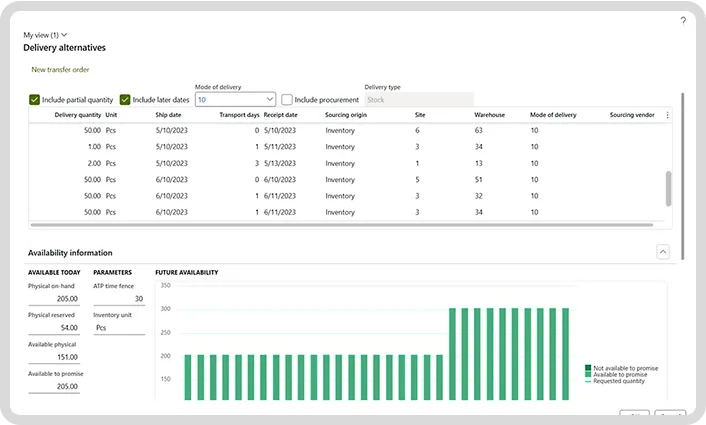
Ten Features of Farm Record-Keeping Software That Improve Efficiency
- Automatic Data Logging: Forget about manually writing down every task you complete. These platforms automatically log data, reducing the chances of human error and saving you time.
- Centralized Information Hub: All your farm’s data, from crop records to machinery performance, is stored in one place, making it easy to access and track.
- Labor Management: Track work hours, job assignments, and worker performance. This ensures you’re getting the most out of your team and prevents overworking or underutilizing staff.
- Financial Tracking and Budgeting: Manage your income and expenses effortlessly. With tools that help track costs in real-time, you’ll know exactly where your money is going and can adjust your budget accordingly.
- Inventory Management: Keep tabs on your stock, whether it’s seeds, fertilizers, or spare parts, and know when it’s time to reorder before you run out.
- Task Scheduling: Set reminders for planting, irrigation, harvesting, and maintenance. This helps you stay on top of crucial tasks without the stress of having to remember everything. Using a harvest management software helps you automate all these tasks one a single unified platform hassle free.
- Weather Forecasting: Integrate local weather data to plan your farm activities, whether it’s planting or harvesting, so you’re never caught off guard by weather conditions.
- Yield Monitoring: Track yield data and analyze trends over time. This helps you predict future harvests and adjust your practices to maximize productivity.
- Mobile Access: With mobile apps, you can manage your farm data on the go. Whether you’re in the field or at the market, you’ll always have the latest information.
- Regulatory Compliance: Keep all your compliance records organized and easily accessible. This makes audits or inspections smoother and ensures you’re following all the necessary guidelines.
How to Choose the Right Farm Record-Keeping Software for Your Farm?
Choosing farm software isn’t like buying a new tractor; you don’t just test-drive it and call it a day. It has to fit how your farm runs, how you make decisions, and how you track the things that matter. Whether you’re managing fields, herds, feed, harvests, or all of it together, the software needs to work for you, not the other way around.
The right tool in farm management helps you replace guesswork with real numbers. It gives you one place to track your costs, inputs, animal health, grazing rotations, labor, and more. But here’s the catch: not all software is made equal, and what works for a 500-acre grain operation may not make sense for a small-scale dairy or poultry farm.
Before choosing, step back and look at your most significant pain points. Are you:
- Struggling to keep all your farm records organized?
- Tired of losing time finding old spray or feeding records?
- Unsure which part of your farm is actually making money?
- Getting overwhelmed with compliance and paperwork for traceability?
If you answered yes to even one of those, then it’s worth finding software that solves that specific issue first.
5 Things to Look for in Farm Record-Keeping Software When Measuring Efficiency
If your goal is to do efficient farming, your record-keeping software needs to help you achieve it. Here are five things to look for if you’re choosing software with farm efficiency in mind:
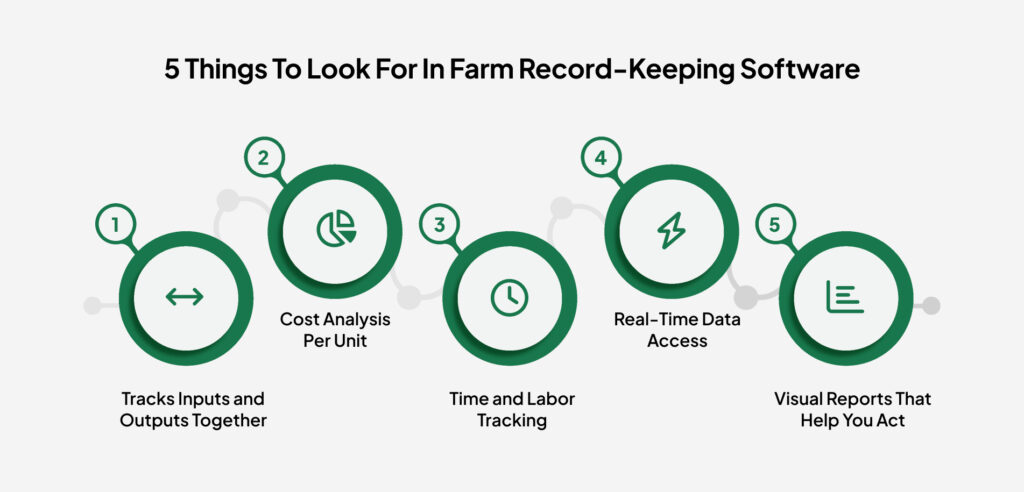
1. Tracks Inputs and Outputs Together
Farm efficiency is all about what you’re putting in and what you’re getting out. Look for software that lets you connect costs, such as feed, seed, fuel, or labor, to the actual results, like yield, milk, weight gain, or harvest. You need to see not just what you did, but what it produced.
2. Cost Analysis Per Unit
The best tools break down your real cost per acre, per liter of milk, per bird, or per ton of harvest. This helps you spot where you’re bleeding money, or where you’re turning a solid profit. Without this level of detail, you’re guessing.
3. Time and Labor Tracking
Efficient farming isn’t just about inputs; it’s also about time. Good software will let you track who did what, how long it took, and how much that labor cost. This helps you tighten up your workflow, reduce wasted time, and plan staffing smarter.
4. Real-Time Data Access
Waiting until the end of the season to see how things went? That’s too late. Efficient decision-making happens during the season. Look for software that gives you real-time updates on what’s been sprayed, planted, treated, or harvested, so you can adjust as you go.
5. Visual Reports That Help You Act
You don’t need fancy graphs; you need clear insights. Choose software that turns your records into simple, visual dashboards: field-by-field comparisons, herd performance trends, and cost breakdowns. If the data doesn’t help you do something, it’s just noise.
How Folio3 AgTech Helps You Achieve Farm Efficiency?
Folio3 AgTech’s farm management solutions are designed to help farmers tighten operations, cut waste, and make informed decisions across the entire farm cycle.
The farm record-keeping software brings structure to daily operations. It captures field activities, livestock treatments, irrigation, and input usage, all in real-time. That means no more guessing what was sprayed last season or when an animal was last vaccinated. With everything in one place, farmers avoid overlaps, reduce input waste, and respond faster when issues arise.
Then there’s the farm inventory management software, which tracks every input, seed, feed, chemical, or equipment. Knowing precisely what’s in storage helps avoid over-ordering and downtime. The system even alerts you when stock runs low, so decisions aren’t delayed.
The farm accounting solution ties operations directly to financials. It tracks costs per acre or head, helping identify which fields or herds are truly profitable. Instead of waiting until year-end, farmers get ongoing insight, which means adjustments can be made mid-season, not after losses have stacked up.
Each module works together to cut down manual work, eliminate silos, and help farmers act on real data, not memory. Whether you’re managing crops, livestock, or both, Folio3 AgTech enables you to farm leaner, smarter, and more profitably.
Conclusion
At the end of the day, efficiency is what allows a farm to thrive, even when times get tough. With Folio3 AgTech’s farm management solutions, you can cut down on the stress of managing paperwork and avoid costly mistakes. These tools aren’t just about adding another system; they’re about giving you the clarity and control you need to make smarter choices, save time, and focus on what matters most.
By improving the way you handle records, finances, and resources, you can achieve new levels of productivity and profitability. Minor adjustments lead to bigger results over time, helping you stay on top of challenges and grow your farm with more confidence and less worry.
FAQs
How Do I Make My Farm More Efficient?
Making a farm more efficient starts with optimizing the basics, managing resources like water, fuel, and labor more effectively. Implementing technology such as precision agriculture tools can help track inputs and outputs in real-time. Regularly reviewing and adjusting processes is key to running a lean, productive farm.
What Is the Key to Increase Farm Productivity?
Increasing productivity isn’t just about working harder, but working smarter. Start by improving soil health, adopting efficient irrigation practices, and using data to make informed decisions. Crop rotation and selecting high-yield varieties can also help improve long-term productivity while reducing the risk of disease and soil degradation.
What Is the Most Profitable Way to Farm?
Profitability in farming hinges on a combination of careful planning, market knowledge, and cost control. Diversifying crops or livestock, finding niche markets, and cutting input costs through better management are all strategies. Direct sales to consumers, value-added products, and sustainable practices can also help maximize profits in today’s market.
How Many Acres Does a Farm Need to Be Profitable?
There’s no set acreage that guarantees profitability. It’s about efficiency and the right market fit. Some smaller farms can be highly profitable through specialized crops or intensive practices, while larger operations benefit from economies of scale. Profitability is more about the farm’s operations and management, not just its size.
What Is The Formula For Agricultural Efficiency?
Agricultural efficiency can be calculated in different ways depending on what you want to measure. A standard method is yield efficiency, which looks at the ratio of harvested acres to planted acres, multiplied by the yield per acre.
If Farm Efficiency Is Measured As Profit Per Acre Then Which Farm Has The Highest Efficiency?
Without detailed figures on profit and acreage for each farm, it’s not possible to pinpoint the most efficient one in terms of profit per acre. In this case, efficiency is worked out by dividing the farm’s total profit by its total cultivated acres. The farm with the highest ratio would be the most efficient, but you’d need to calculate and compare this for each farm to know for sure.
What Are The Two Main Measures For Efficiency?
When talking about efficiency in algorithms, the two key measures are time complexity and space complexity. Time complexity examines how long it takes for an algorithm to run as the input size increases, while space complexity measures how much memory it uses during execution.
How Does Precision Agriculture Work?
Precision agriculture applies technology to fine-tune farming practices by delivering inputs like water, fertilizer, and pesticides to targeted areas of a field. This is based on real-time data and analysis, helping to boost yields, reduce waste, lower environmental impact, and improve overall farm efficiency.
How Can Technology Help Improve Farm Efficiency?
Technology can boost farm efficiency in several ways, including automation, precision agriculture, and data analytics. Robotics and drones can take over repetitive jobs like planting or harvesting, while GPS systems and soil sensors help apply resources more precisely, cutting waste and making the most of every input.



